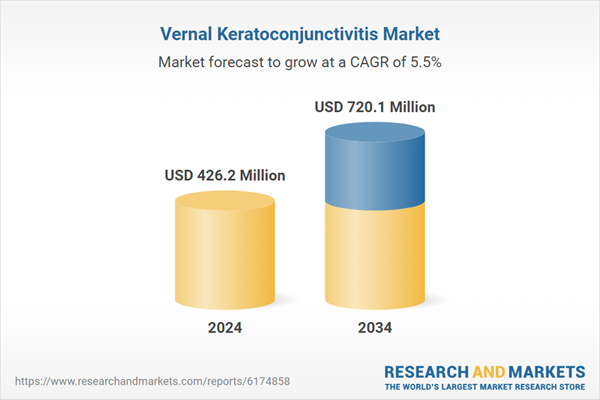VKC primarily affects children and adolescents, particularly in warm climates. The growing awareness and diagnosis of allergic ocular conditions in this demographic are driving demand for effective VKC treatments globally.
Increasing Prevalence of Limbal Vernal Keratoconjunctivitis
The limbal vernal keratoconjunctivitis segment held a sizeable share in 2024, backed by gelatinous limbal infiltrates and potential damage to the corneal epithelium. This segment is gaining clinical attention due to its tendency to cause long-term complications if left untreated. It is particularly common in children living in warm, dry climates, which heightens the demand for targeted therapies in endemic regions.Mast Cell Stabilizers to Gain Traction
The mast cell stabilizers segment generated robust revenues in 2024 for patients with mild to moderate symptoms. These agents work by preventing the release of histamines and other inflammatory mediators, helping to reduce itching, redness, and swelling. Though they often require several weeks to reach full efficacy, their favorable safety profile makes them a preferred first-line option. To stay competitive, pharmaceutical companies are enhancing formulations for faster onset of action, combining mast cell stabilizers with antihistamines, and improving dosing convenience to support patient adherence.Rising Adoption of Topical Treatments
The topical treatments segment held a significant share in 2024, owing to their direct mode of action and minimal systemic exposure. Eye drops containing corticosteroids, cyclosporine, tacrolimus, and antihistamines are widely prescribed to manage acute flare-ups and chronic inflammation. This segment benefits from continuous innovation in drug delivery technologies, such as sustained-release formulations and preservative-free options.North America to Emerge as a Propelling Region
North America vernal keratoconjunctivitis market held a robust share in 2024 owing to improved diagnostic rates, heightened awareness among eye care professionals, and increasing cases linked to climate shifts and allergens. The region also benefits from a well-established ophthalmic drug industry and regulatory pathways that support innovation in pediatric care.Major players in the vernal keratoconjunctivitis market are Santen Pharmaceutical, Teva Pharmaceuticals, Meda Pharmaceuticals, Novartis, Bausch Health, Senju Pharmaceutical, Allergan, Sun Pharma, F Hoffmann La Roche, Laboratoires Thea, AbbVie, Alcon, and Abbott Laboratories.
To build a strong presence in the vernal keratoconjunctivitis market, companies are deploying multi-layered strategies centered around product differentiation, clinical validation, and targeted outreach. Key initiatives include investing in pediatric clinical trials, securing regulatory exclusivity for rare disease indications, and launching educational campaigns for early diagnosis.
Comprehensive Market Analysis and Forecast
- Industry trends, key growth drivers, challenges, future opportunities, and regulatory landscape
- Competitive landscape with Porter’s Five Forces and PESTEL analysis
- Market size, segmentation, and regional forecasts
- In-depth company profiles, business strategies, financial insights, and SWOT analysis
This product will be delivered within 2-4 business days.
Table of Contents
Companies Mentioned
The key companies profiled in this Vernal Keratoconjunctivitis market report include:- Abbott Laboratories
- AbbVie
- Alcon
- Allergan
- Bausch Health
- F Hoffmann La Roche
- Laboratoires Thea
- Meda Pharmaceuticals
- Novartis
- Santen Pharmaceutical
- Senju Pharmaceutical
- Sun Pharmaceutical
Table Information
| Report Attribute | Details |
|---|---|
| No. of Pages | 131 |
| Published | September 2025 |
| Forecast Period | 2024 - 2034 |
| Estimated Market Value ( USD | $ 426.2 Million |
| Forecasted Market Value ( USD | $ 720.1 Million |
| Compound Annual Growth Rate | 5.5% |
| Regions Covered | Global |
| No. of Companies Mentioned | 13 |









